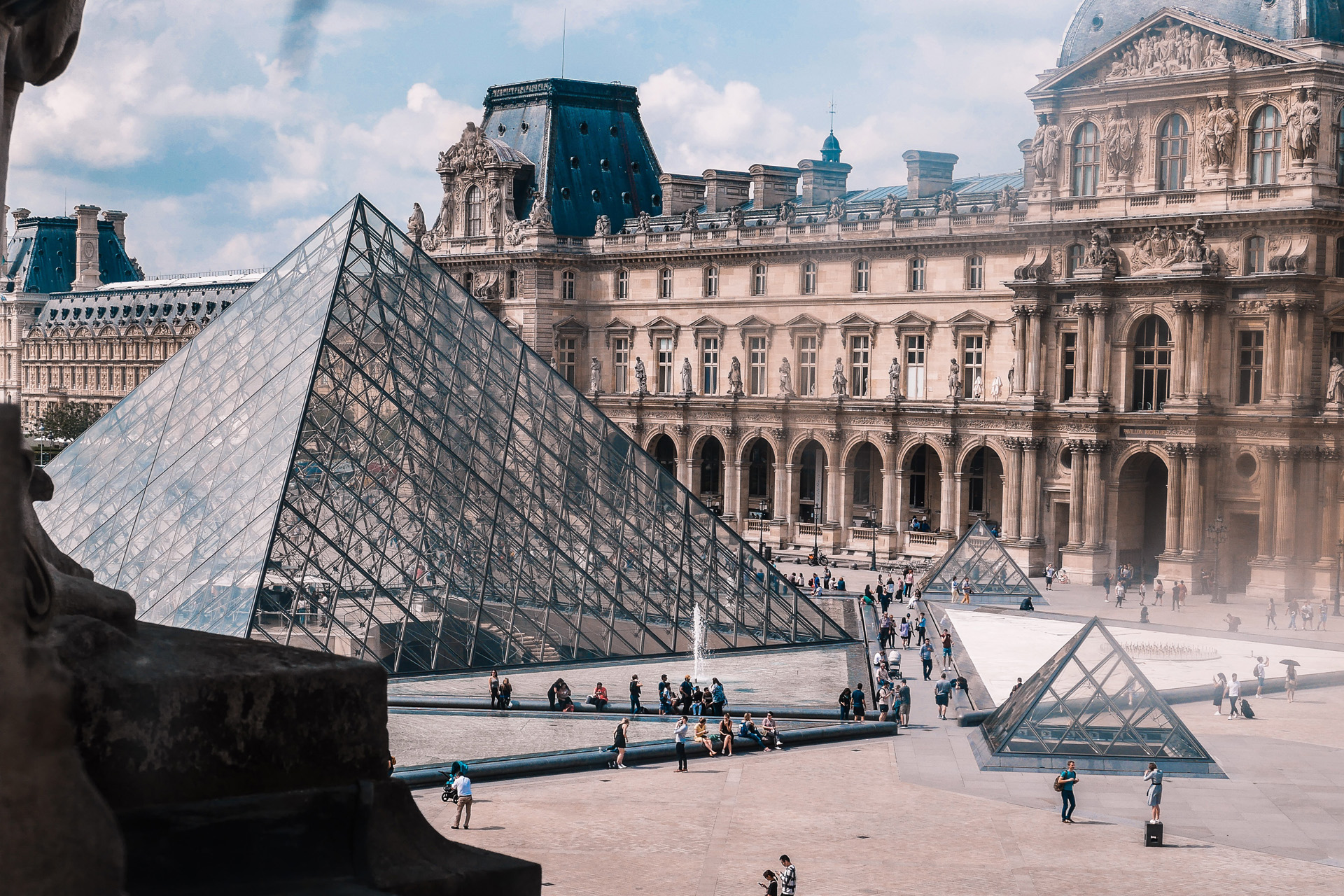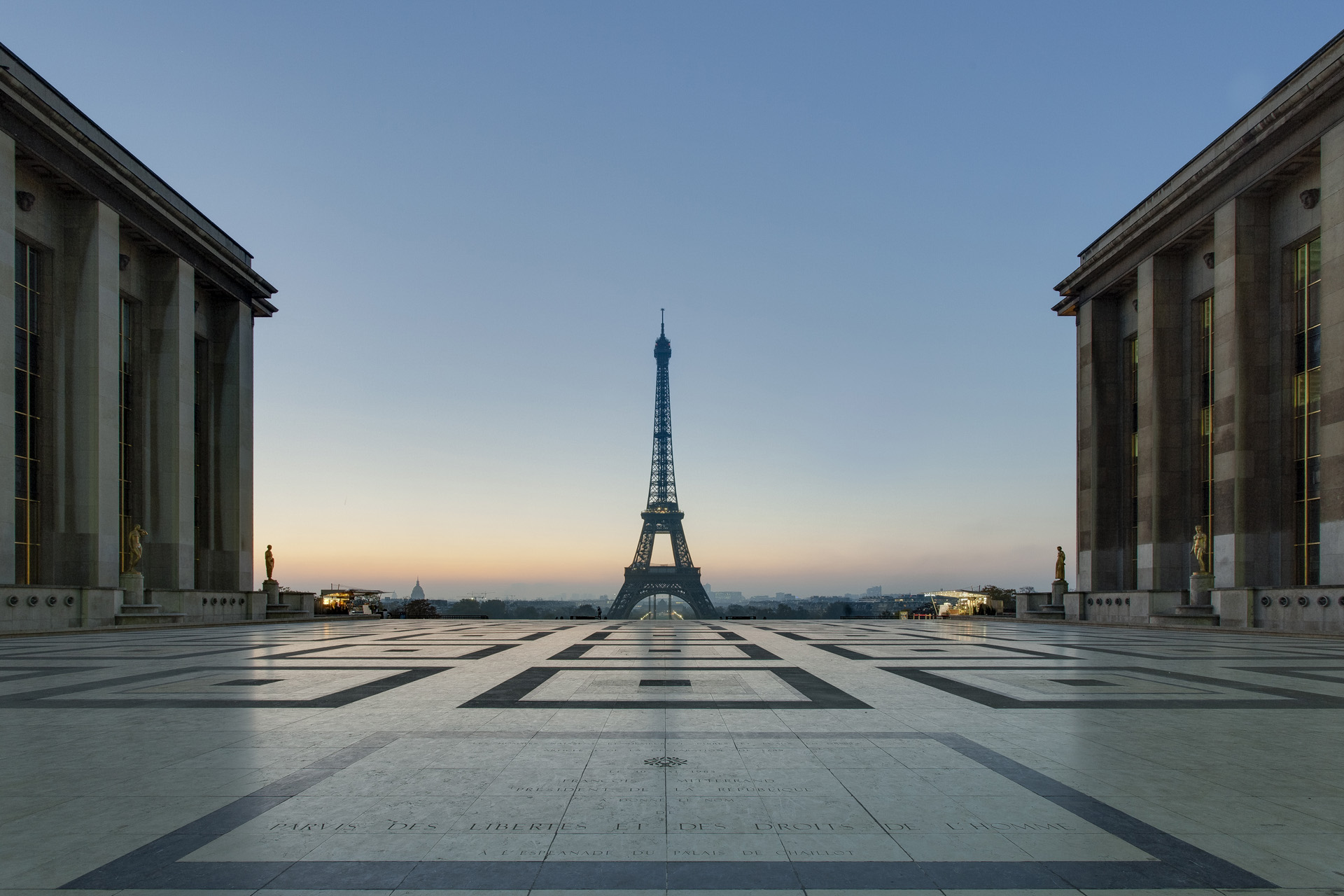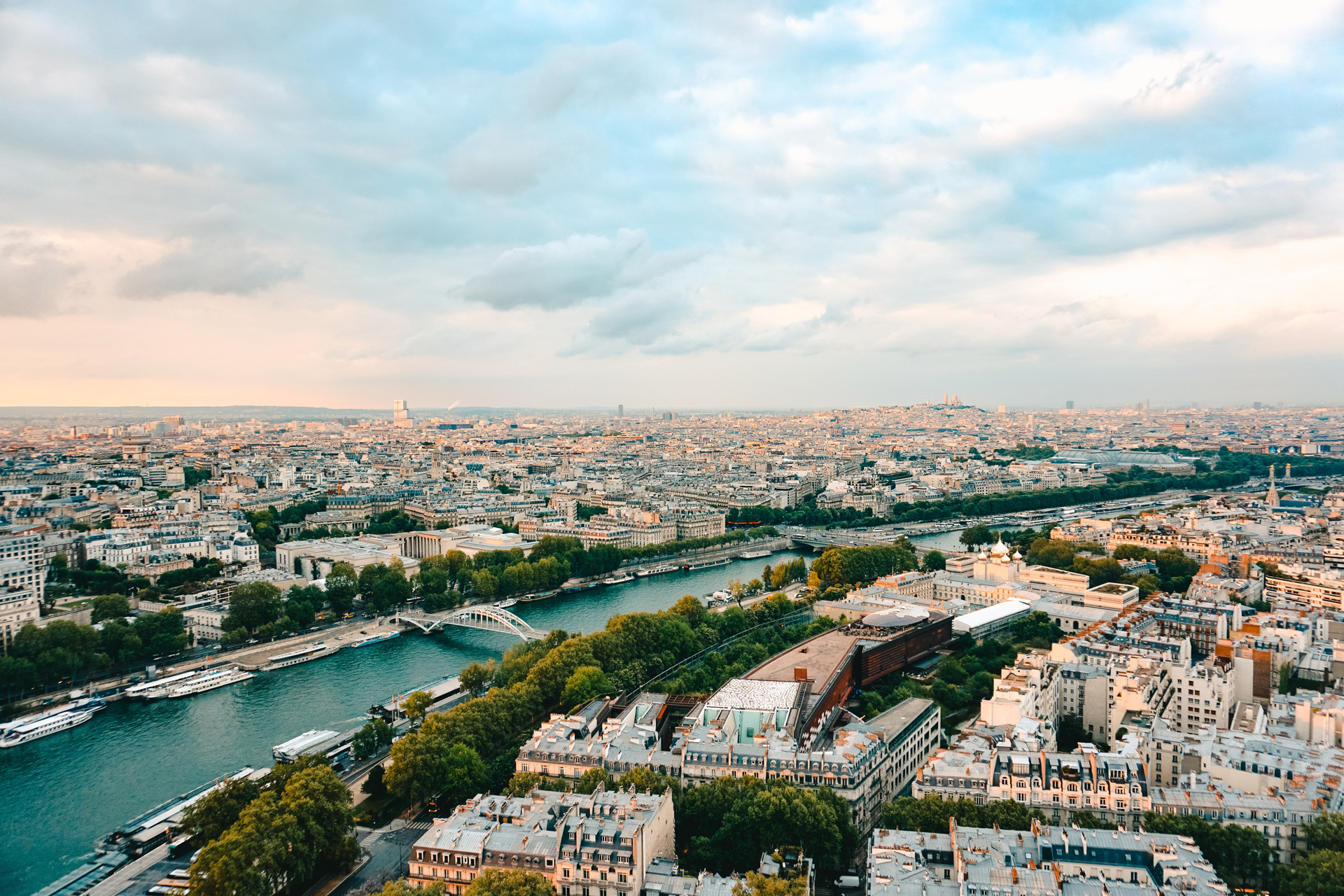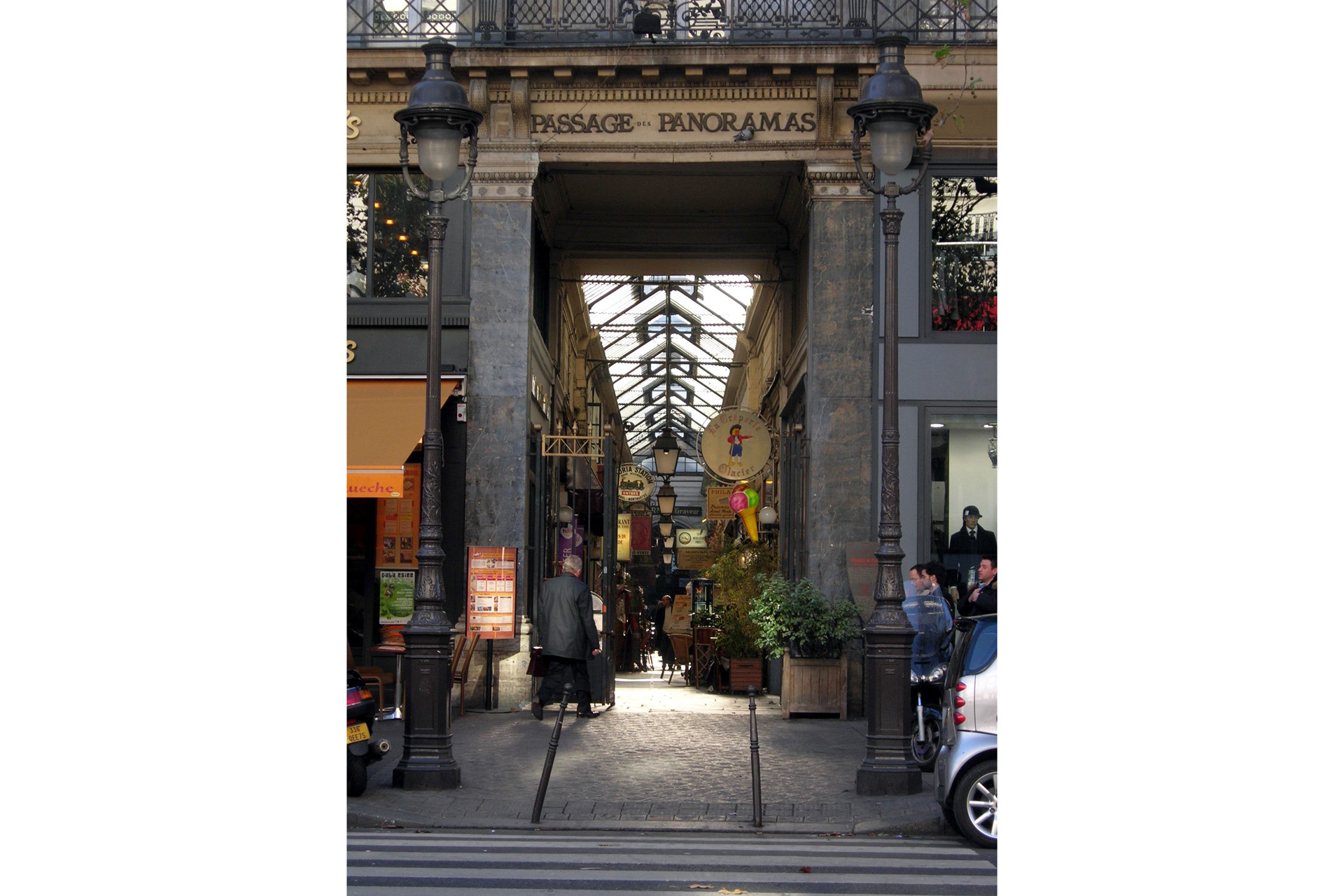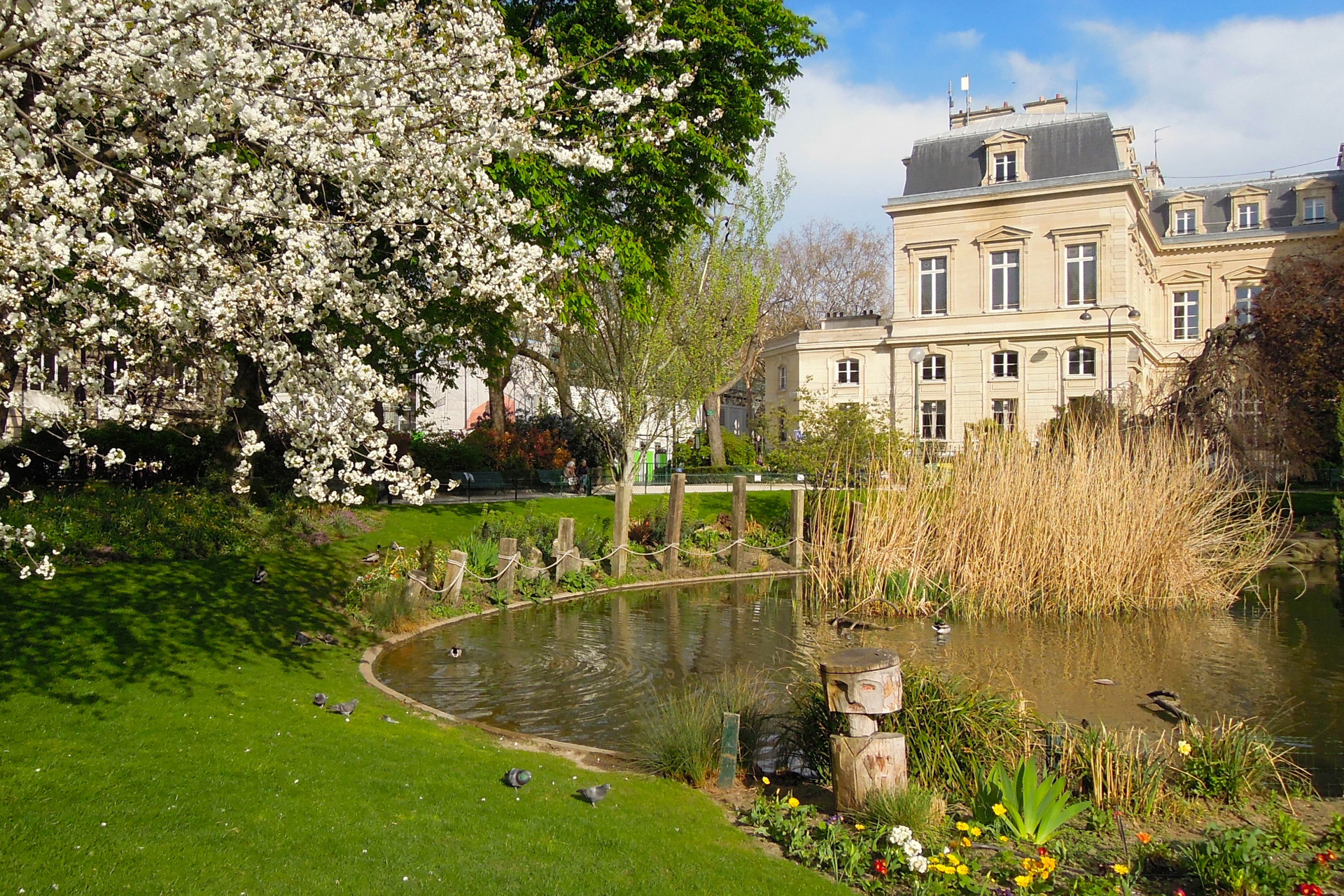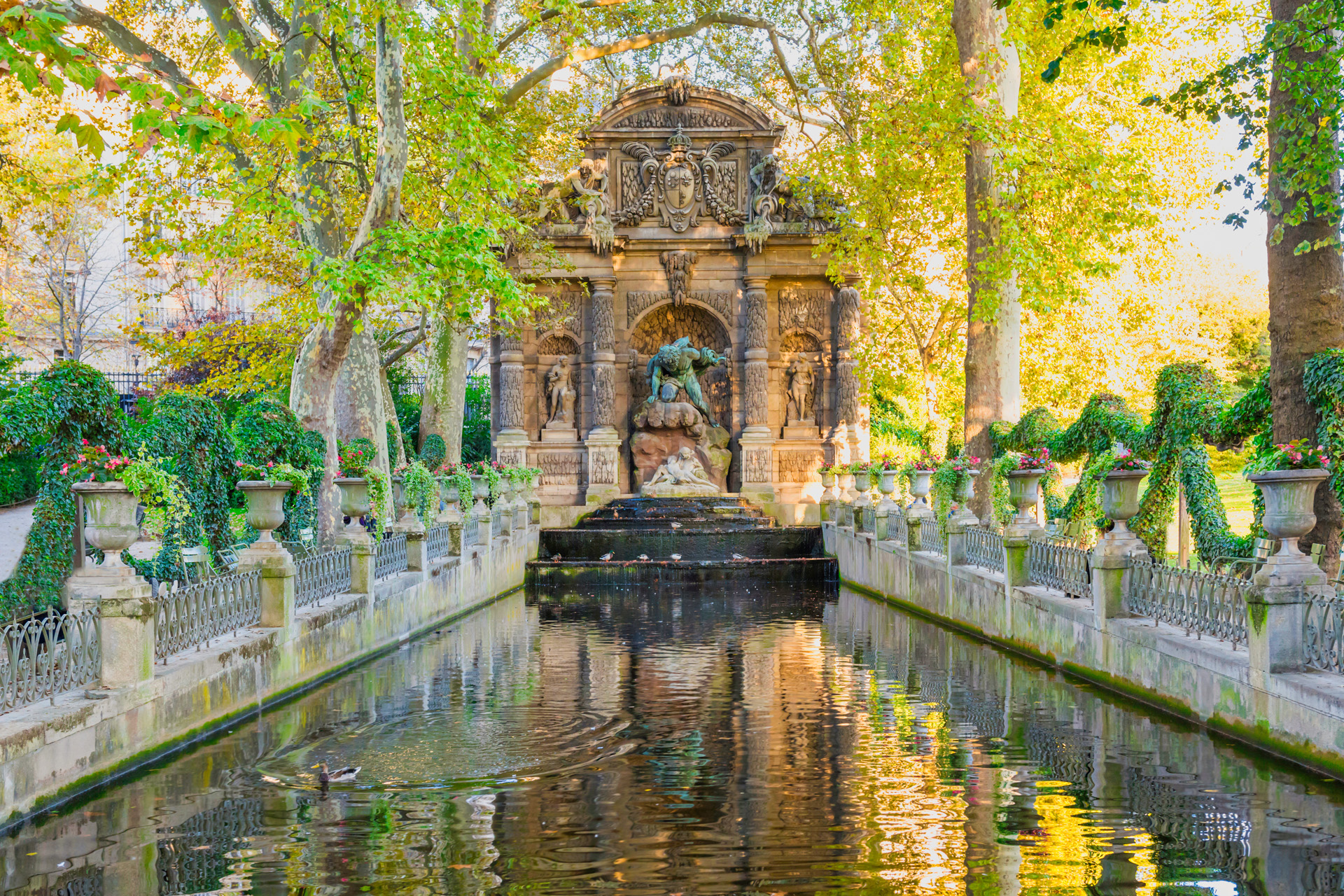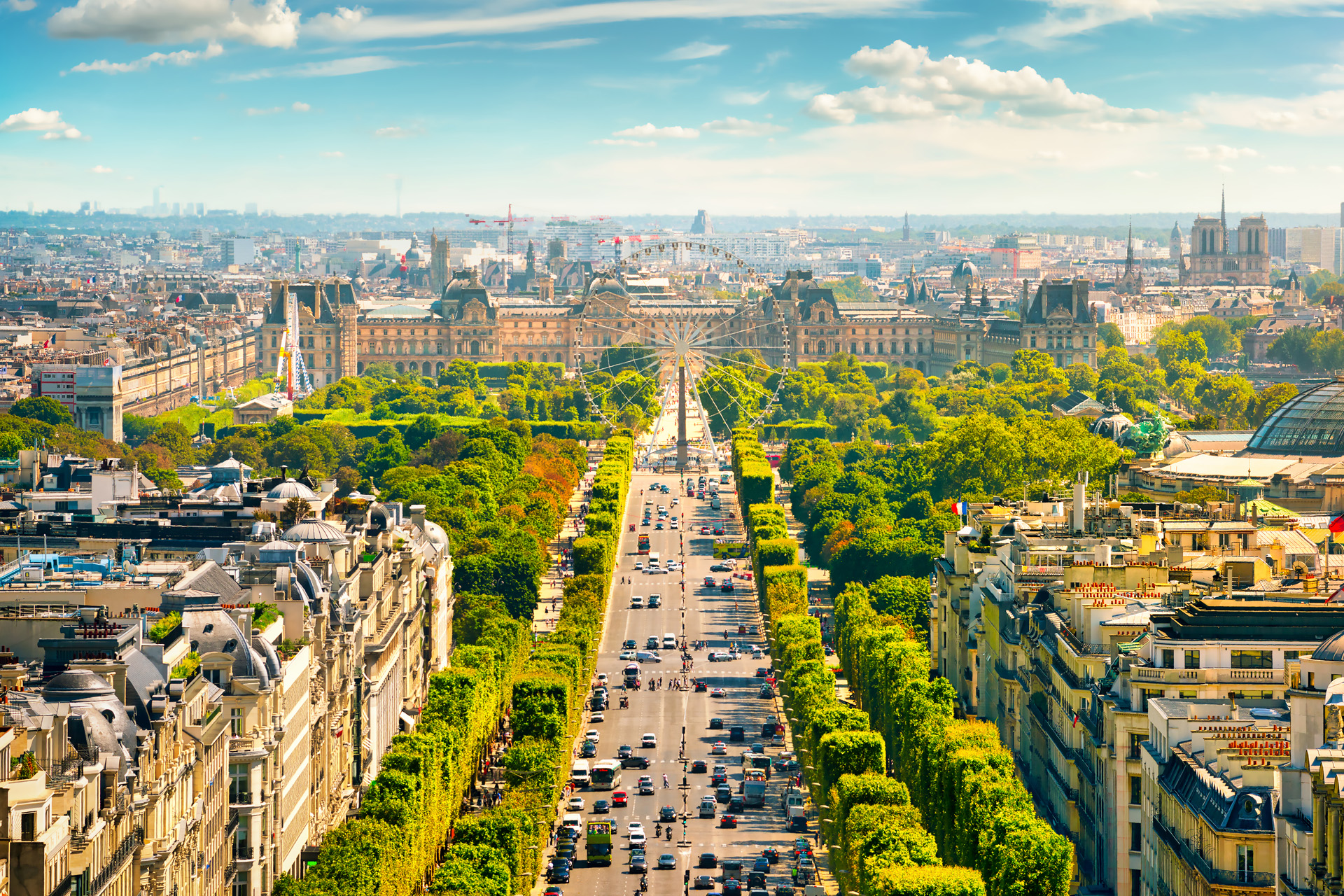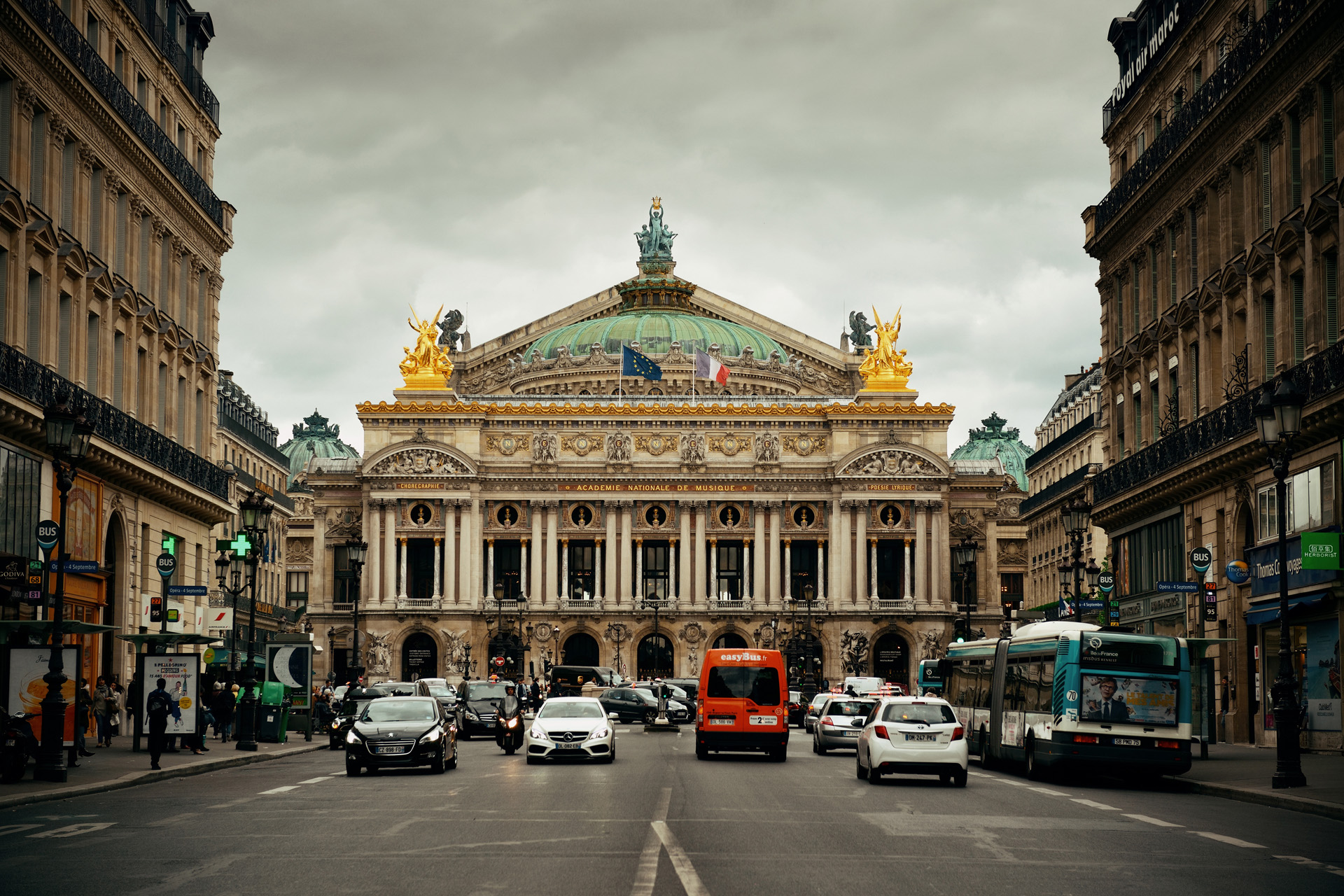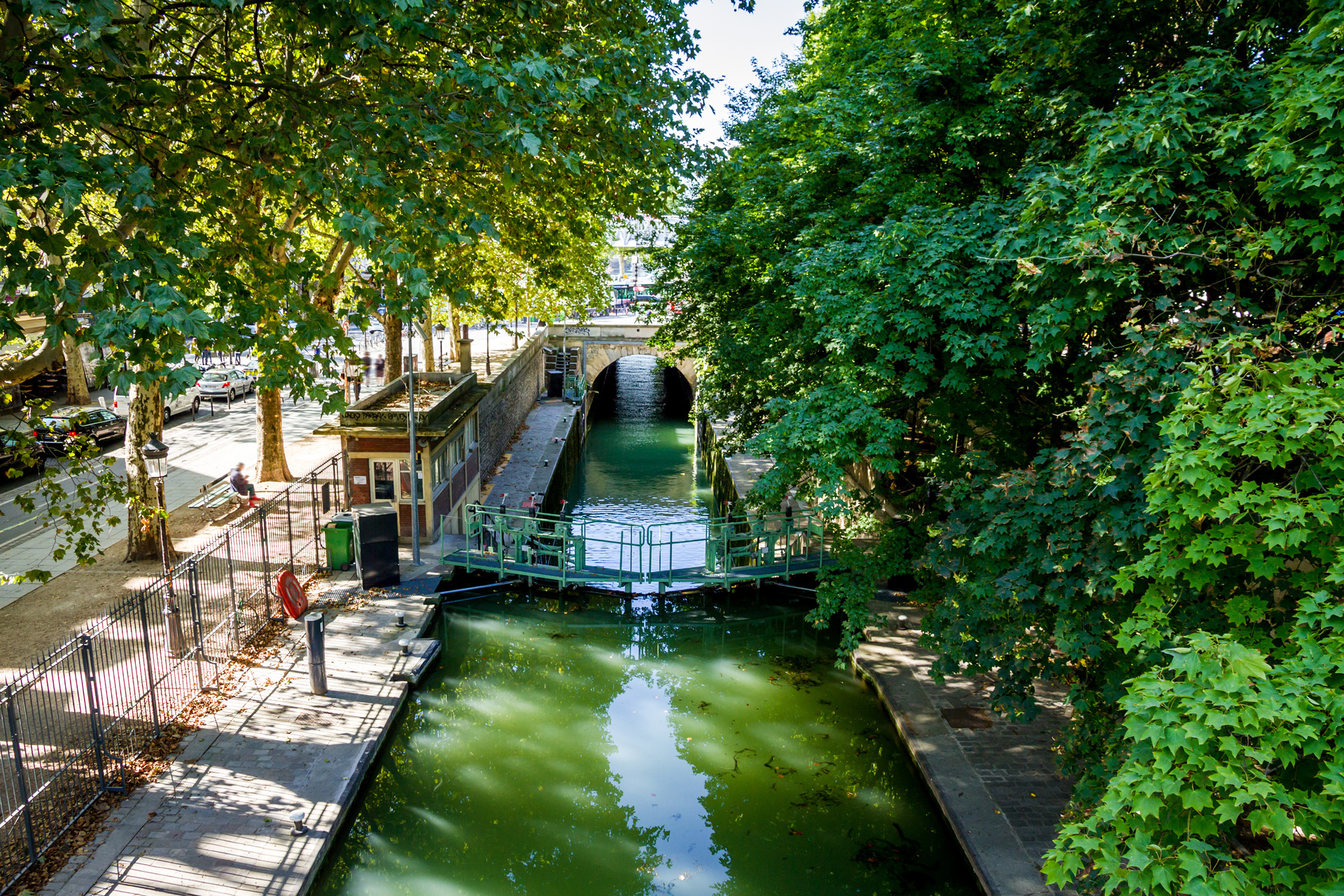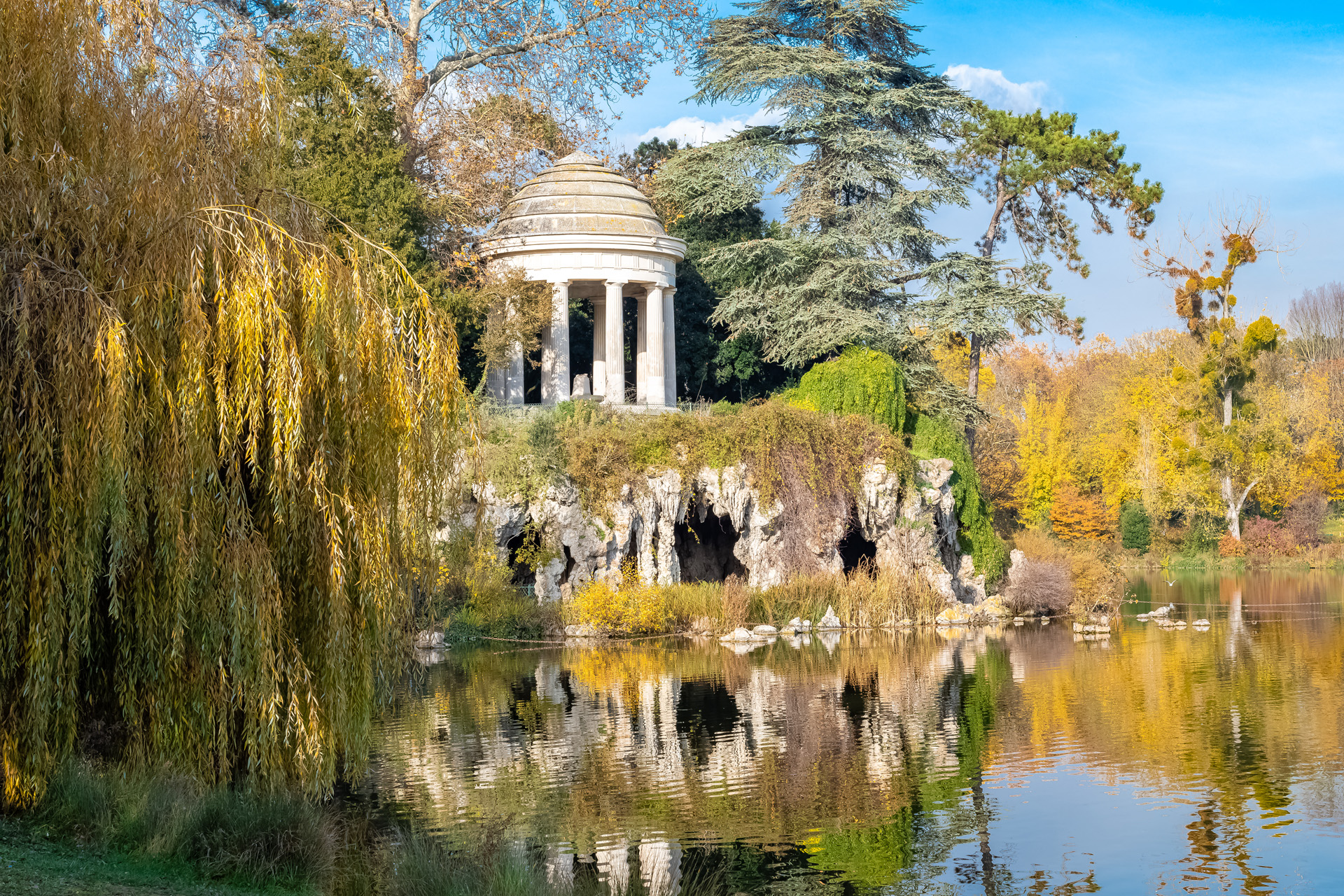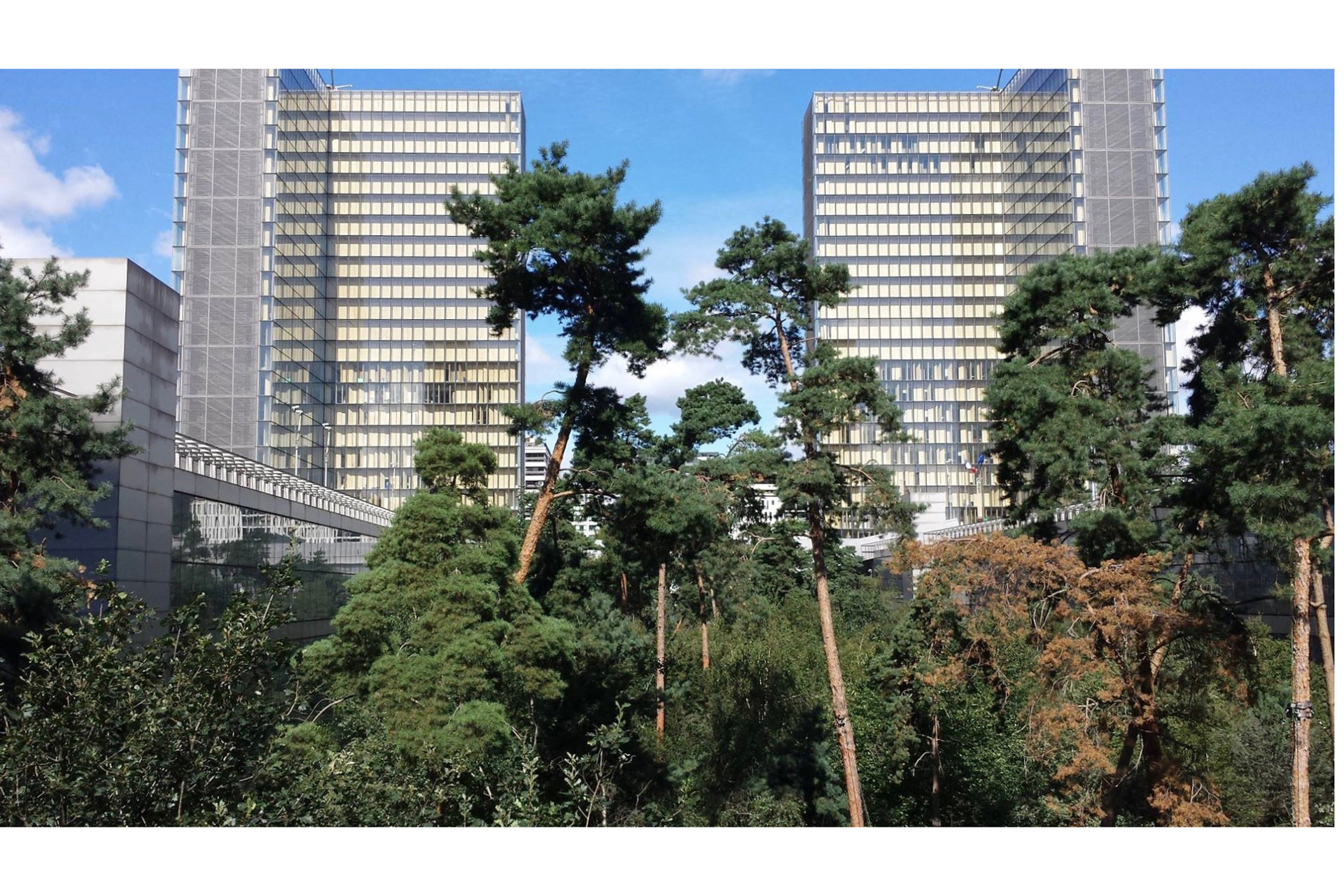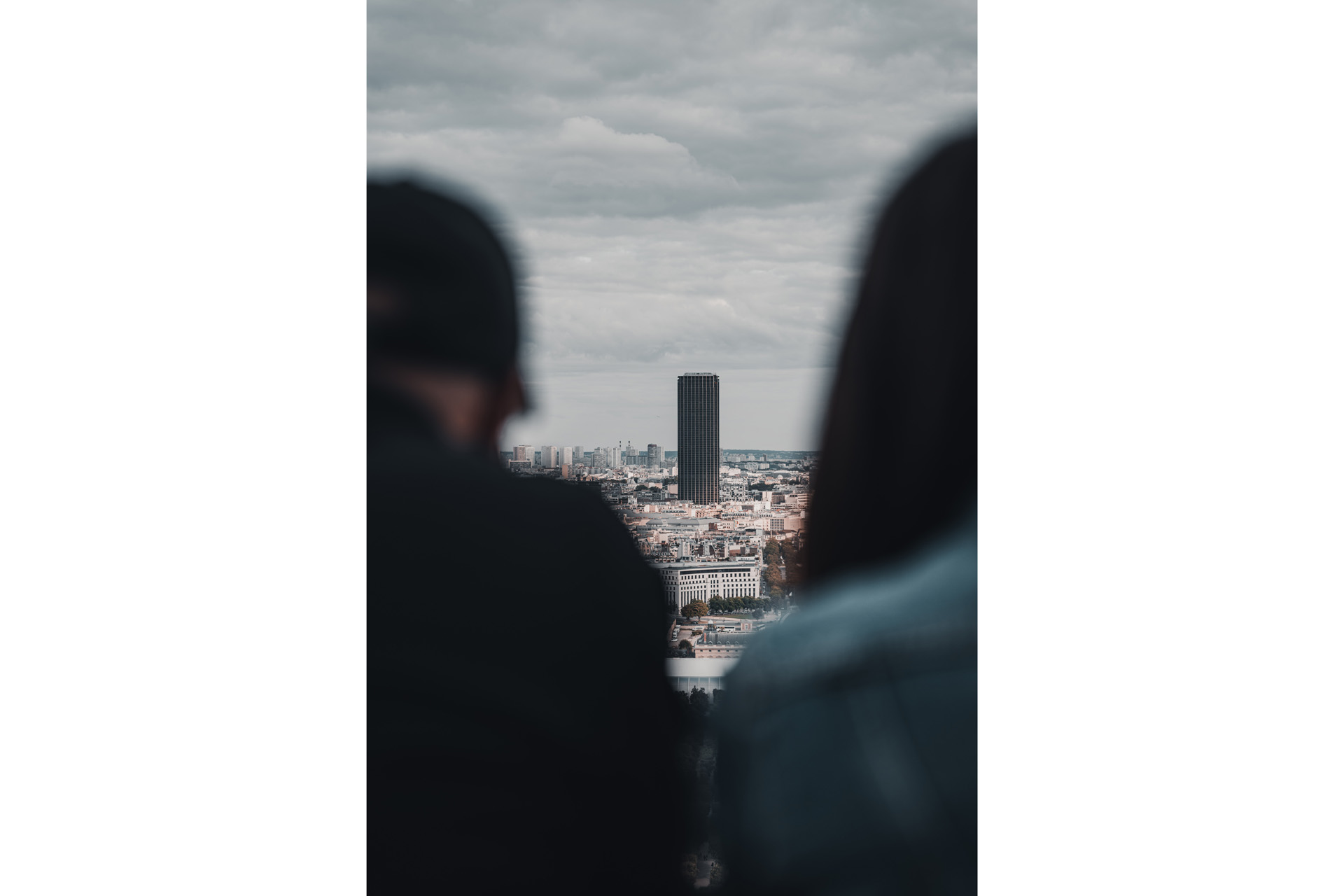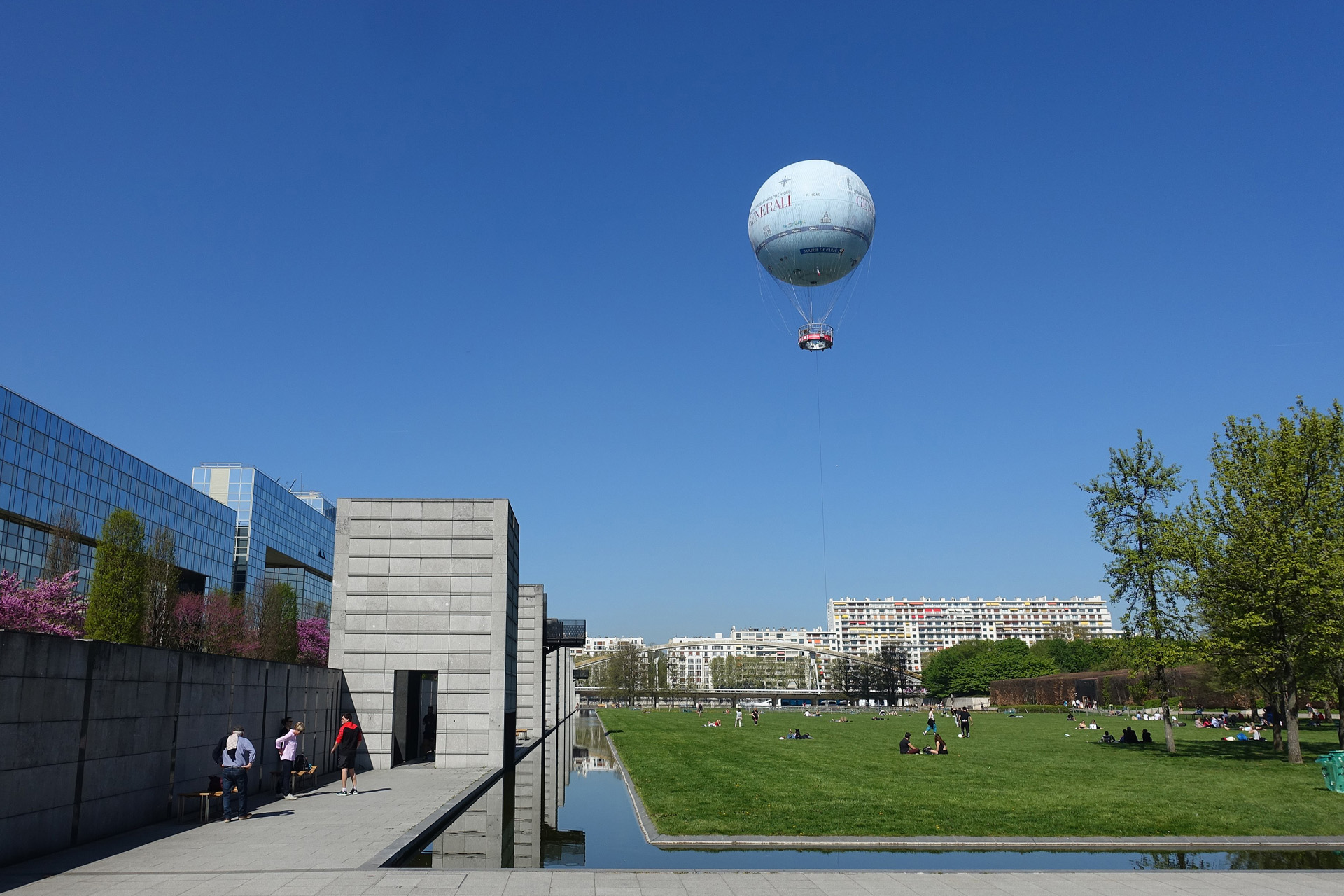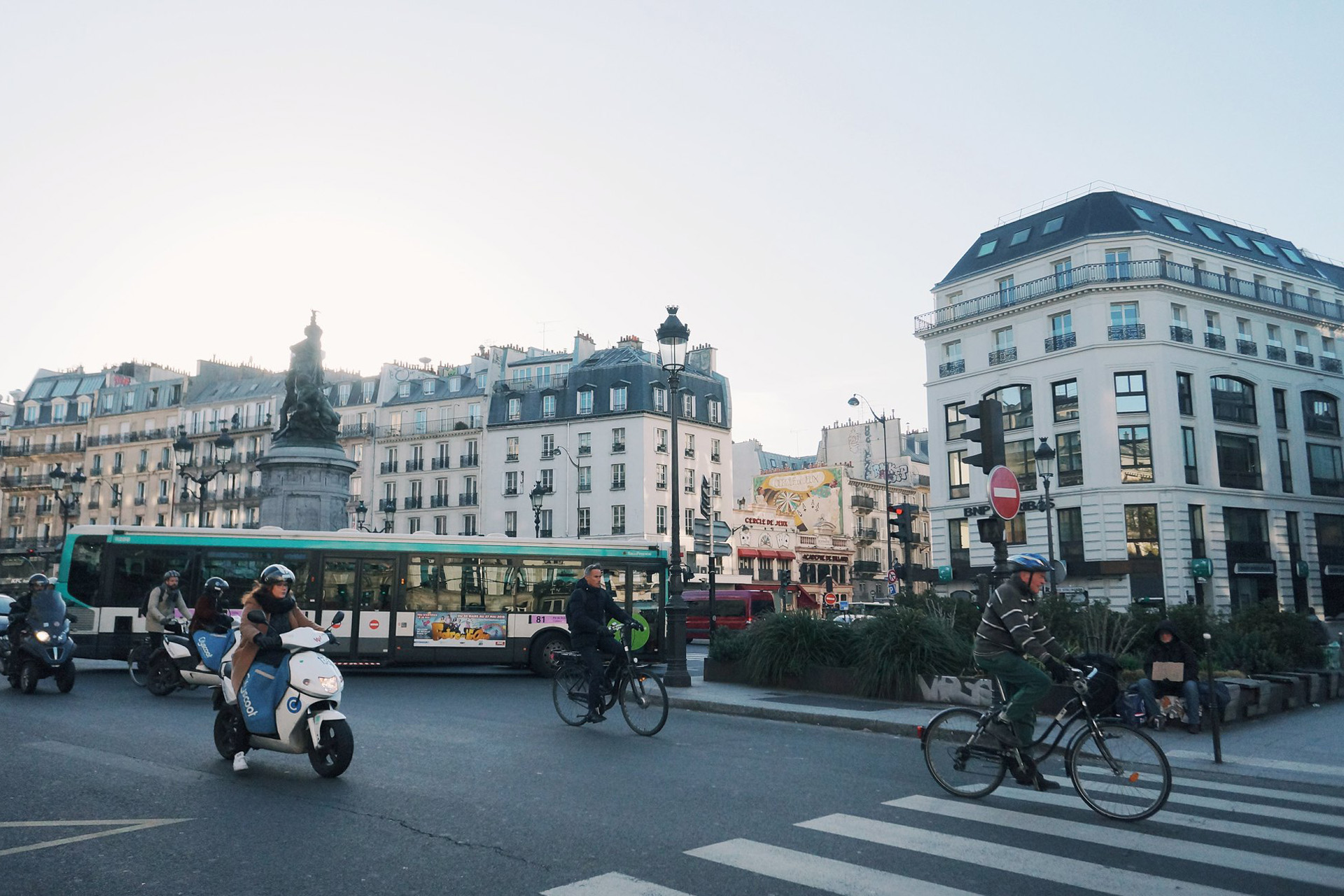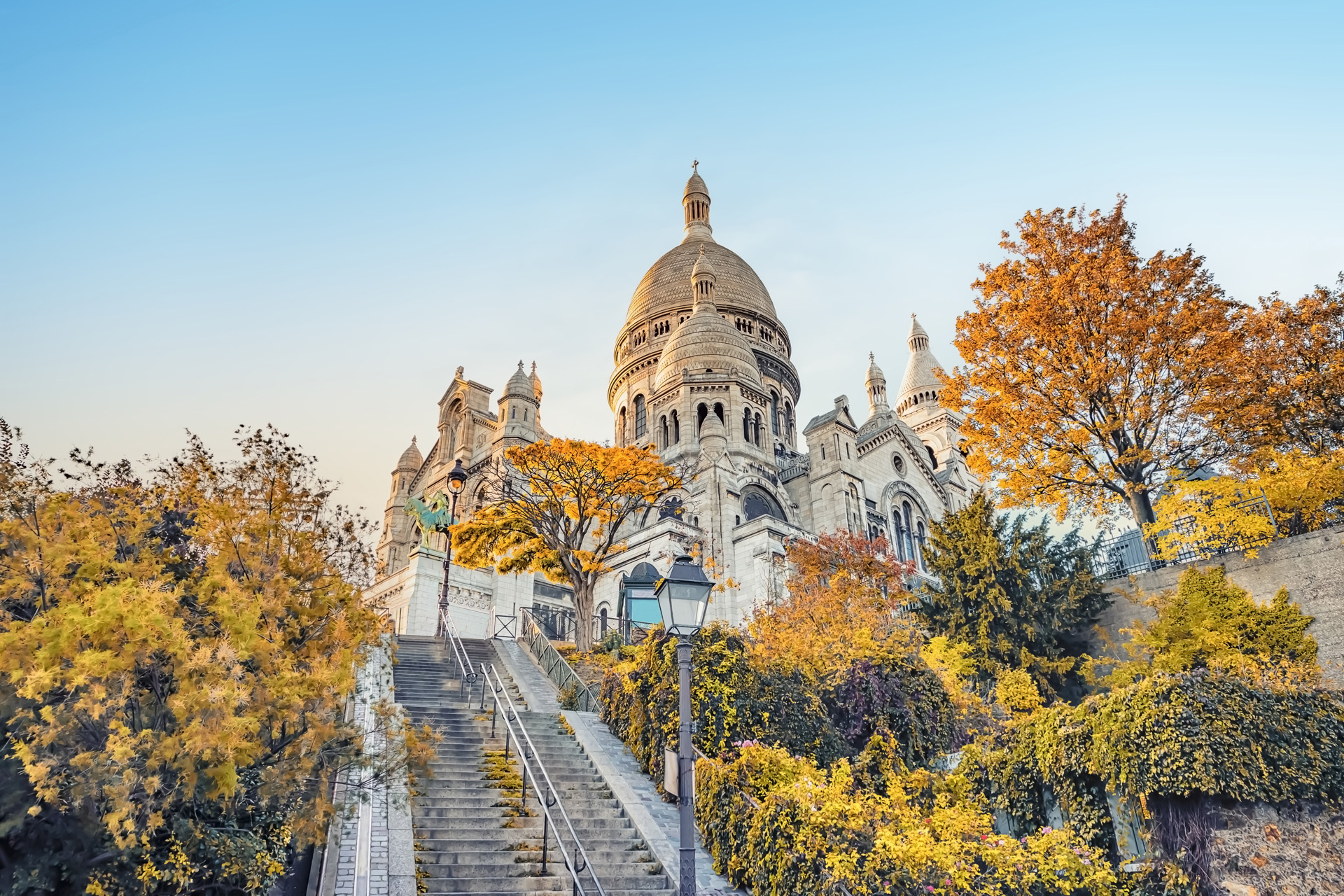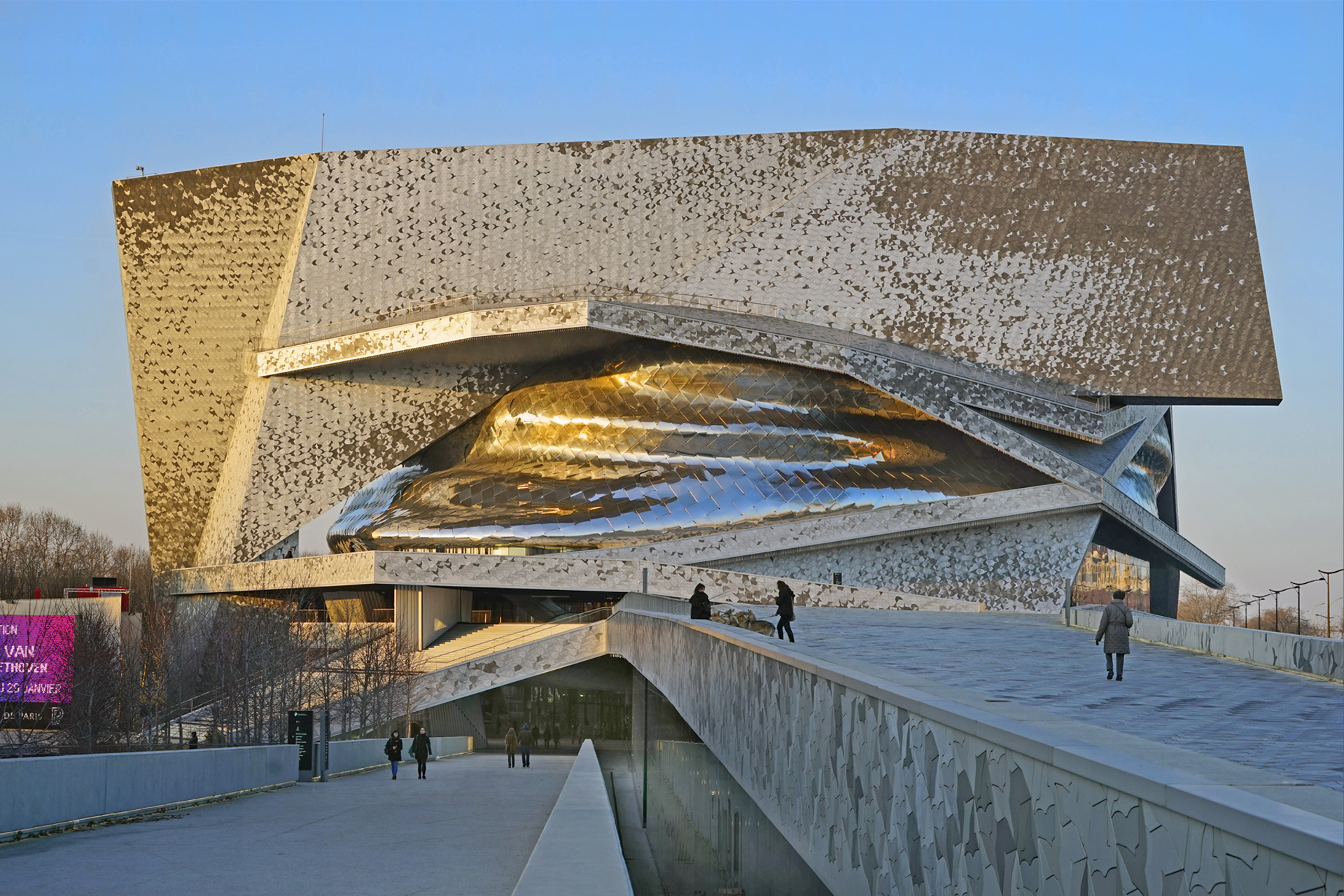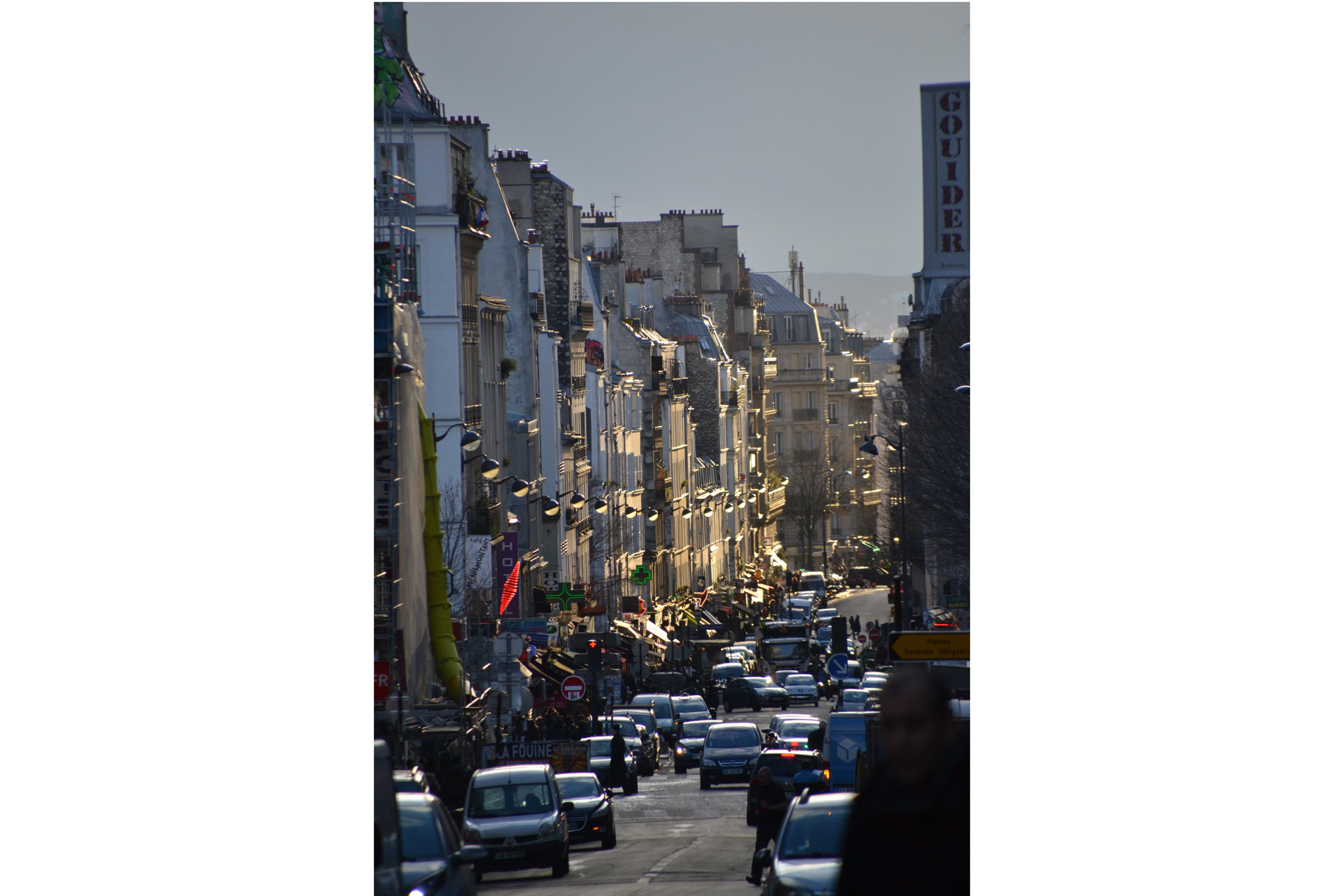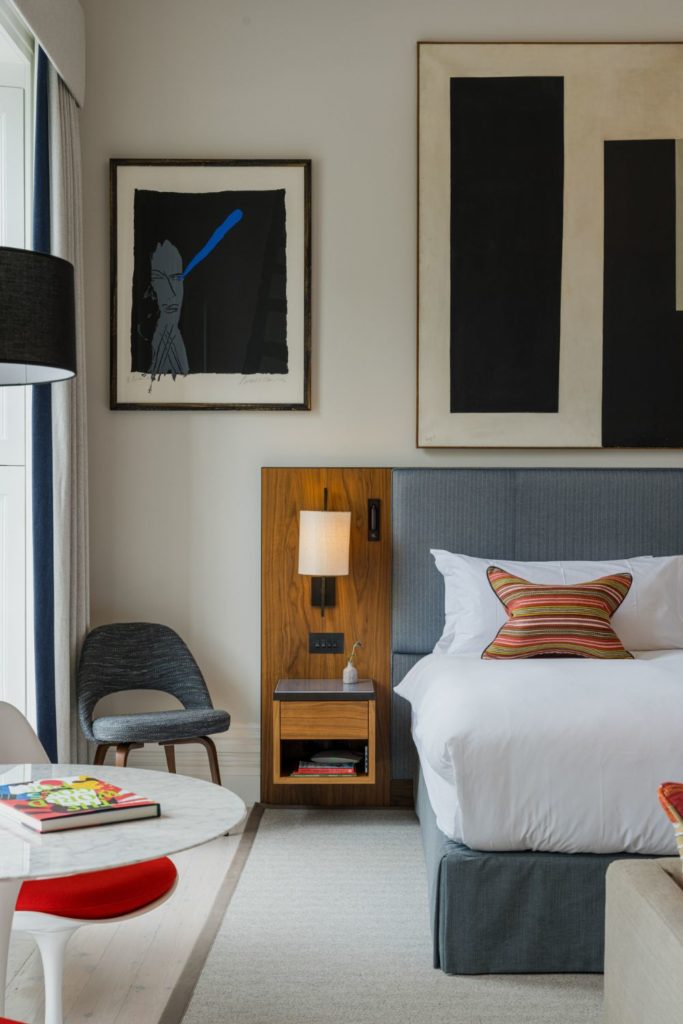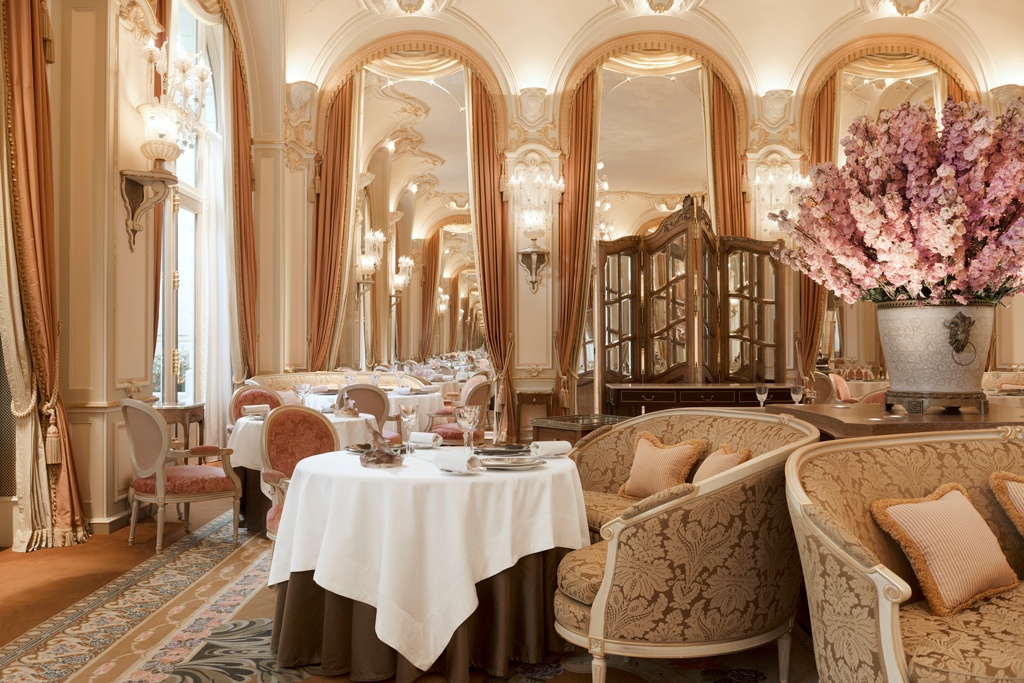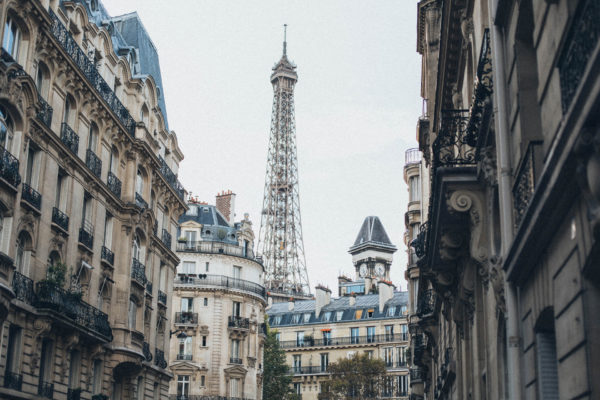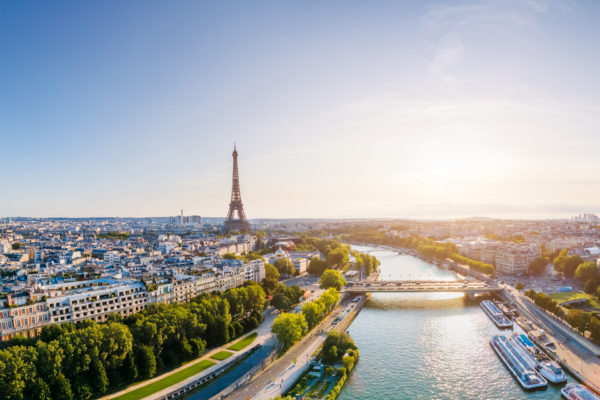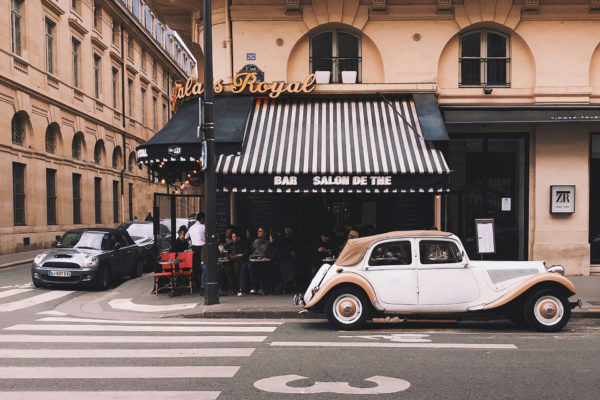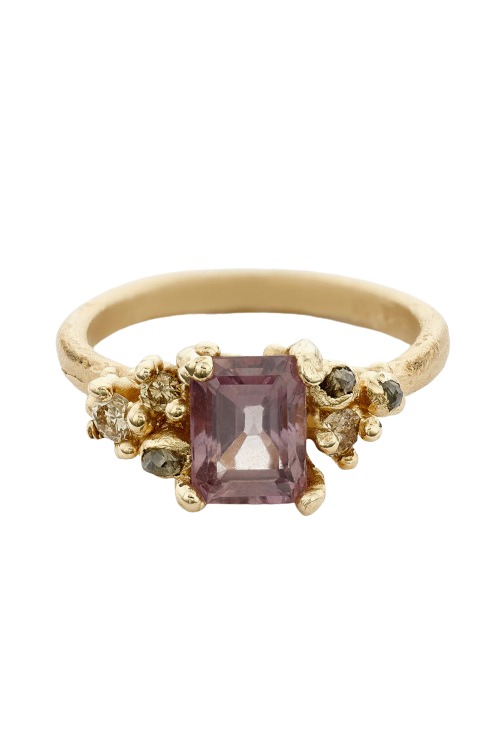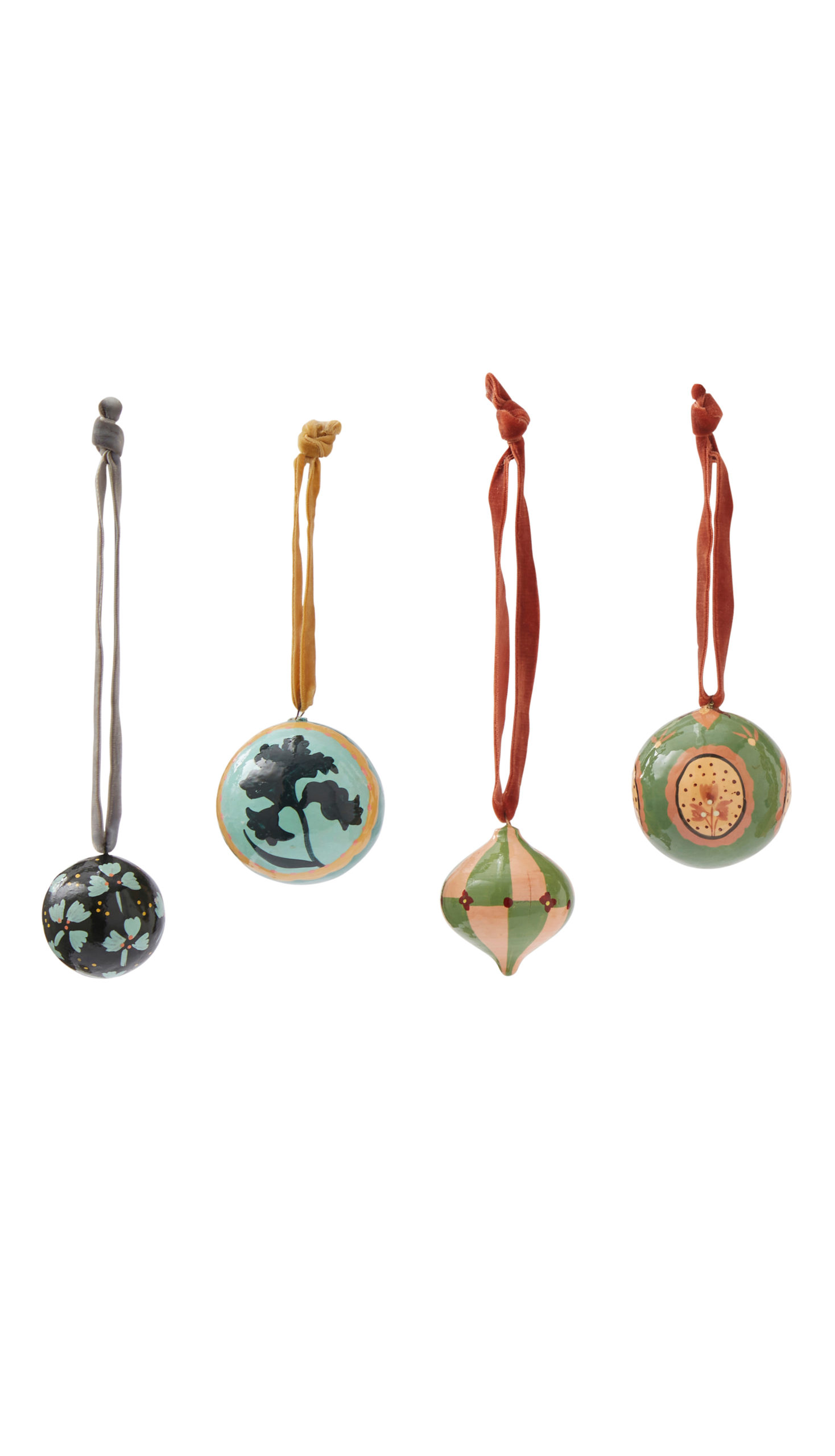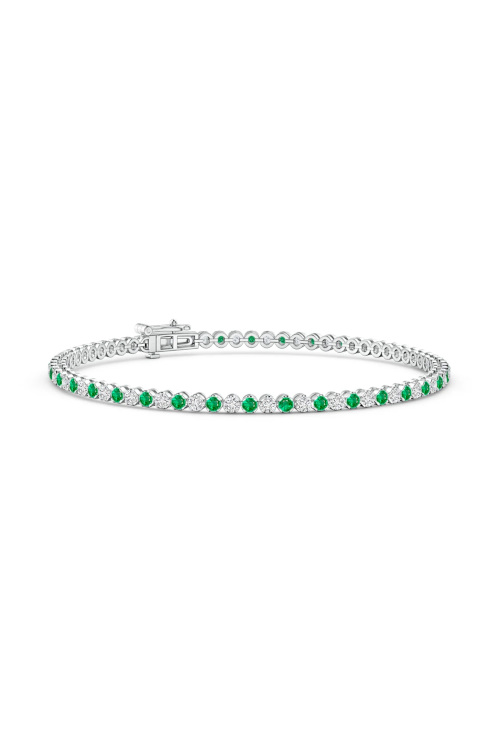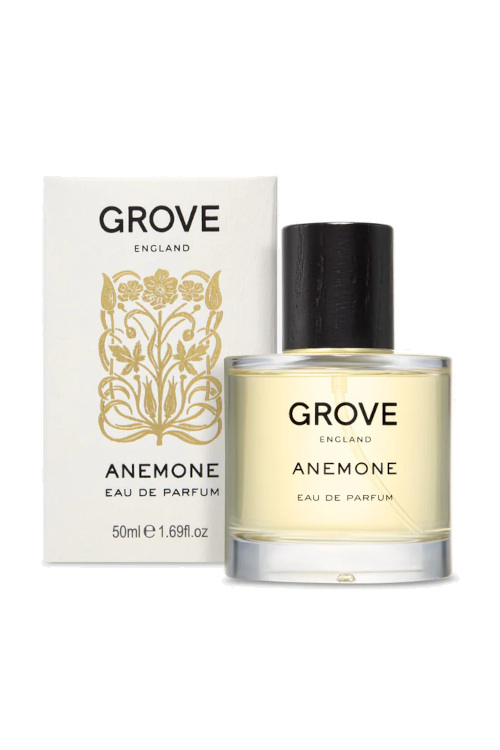The city of love, lights and art has picked up some edge and coolness recently. Idyllic in the summer, autumn and spring – and magical in the festive season, too – it seems like everyone has travelled to Paris in the last year. And, when the Eurostar makes the city so accessible from the UK, it’s getting harder to deny the old adage: Paris is always a good idea. But where are the cool areas? Where should foodies go? Where should you visit for the most quintessential Paris experience? We’ve compiled this Paris area guide to demystify the city’s 20 arrondissements (‘districts’), and help you compile the ultimate Paris holiday.
Read the C&TH Responsible Tourism Guide
Paris Area Guide: The Best Places To Explore
How Many Districts Does Paris Have?
The city of Paris is divided into 20 arrondissements (or ‘districts’), arranged in a clockwise spiral pattern from the centre of the city outwards, often likened to a snail shell. The arrondissements are known by their number but, as well as this, arrondissements are known by a name, often the name of a monument within the arrondissements.
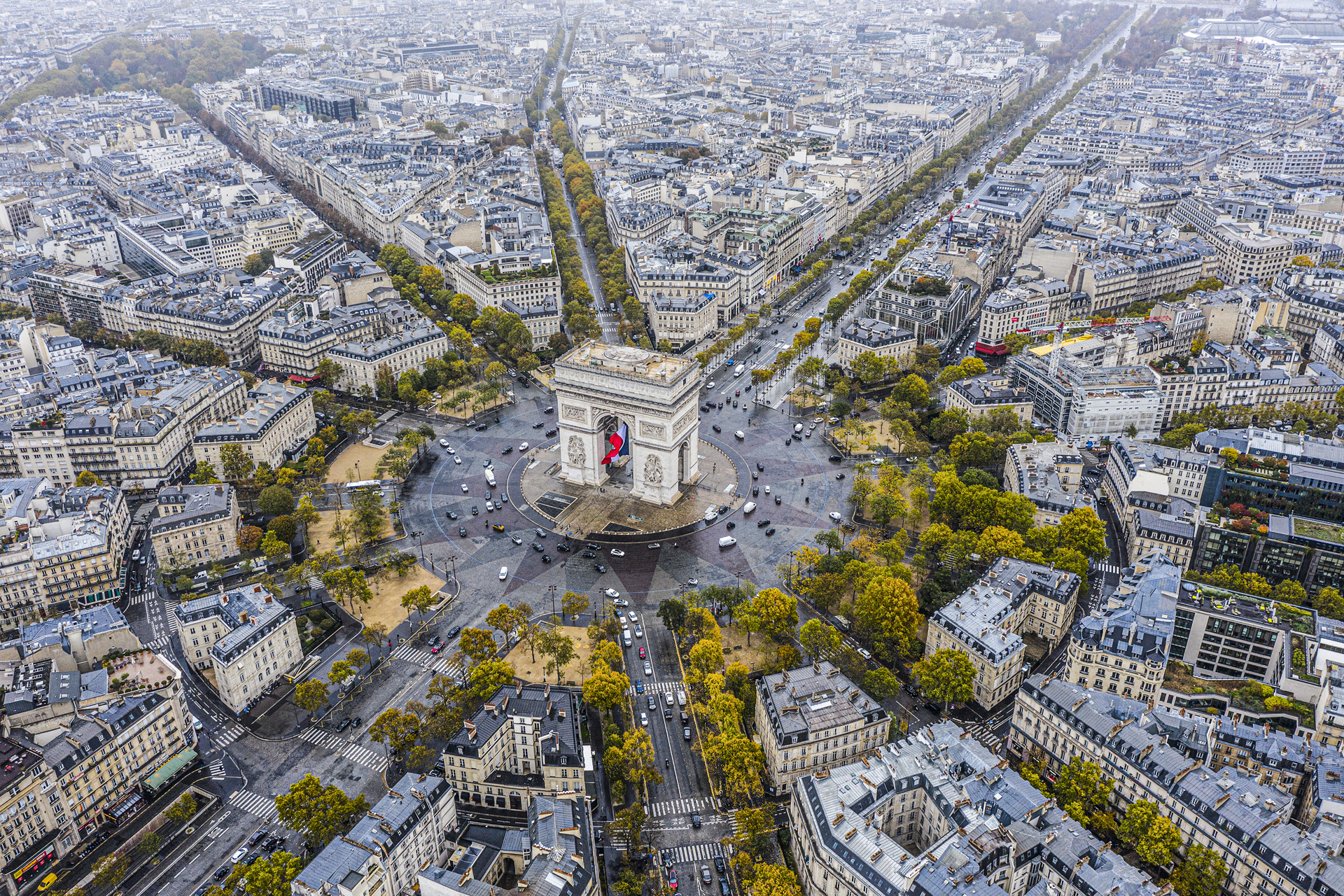
Arc de Triomphe (c) Getty.
Paris Neighbourhoods: The Names To Know
Despite the comparatively rigid segmentation of the city (each arrondissement has its own mayor, too), many Paris neighbourhoods sprawl across district boundaries and seep into one another – so there’s more to know than just the arrondissements…
Rue Montorgreuil: 1st & 2nd arrondissements. A semi-pedestrianised street lined with eateries and cool shops.
Île de la Cité & Île St. Louis: 1st & 4th arrondissements. The two islands of Paris, connected to the rest of the city by bridges, host the Notre Dame Cathedral and pretty gardens to watch the boats float by on the Seine.
Le Marais: 3rd & 4th arrondissements. Once aristocratic, then a bit run down, and now definitely chic again, Le Marais is Paris’ most fashionable quarter, and well-known today as the city’s gay area, with plenty of LGBTQIA+ friendly venues.
Latin Quarter: 5th & 6th arrondissements. On the left bank and arranged around the Sorbonne, the Latin Quarter is busy with students and cute cafes.
Saint-Germain-des-Prés: 6th arrondissement. Literature lovers flock here for its ties to literary and artistic celebrities throughout the 19th and 20th centuries. There’s plenty of lovely cafes, book shops and publishing houses, too.
Pigalle: 9th & 18th arrondissements. Arranged around the Place Pigalle, Pigalle has quickly become one of Paris’ hip areas, regenerating from its previously seedy image (it was even nicknamed ‘pig alley’ in WW2). Here find a vibrant music and art scene and the world-famous Moulin Rouge.
Canal Saint-Martin: 10th arrondissment. Once up-and-coming, now unrefutably cool, go for a stroll down the tree-lined Canal Saint-Martin and you’ll spot couples walking hand-in-hand, readers with legs kicking over the edge towards the water, hipster style coffee shops, and friends laughing in groups – very vibey.
Belleville: 10th, 11th, 19th & 20th arrondissements. Once an independent commune annexed from the city, Belleville (meaning ‘beautiful town’) remains tied to quaint old Parisian architecture, having been neglected during modernisation efforts. As a result, it is the place-to-be for artists, particularly street artists.
La Défense: 3 kilometres west of the city limits. Similar in kind to London’s Canary Wharf, this purpose-built business district is Europe’s largest – not to be mistaken with the more central business district in the 2nd, 8th and 9th arrondissements.
Which Is The Best Area in Paris For…
Food: Haute foodies should head to the 8th arrondissement, where Michelin stars abound amid the Champs-Élysées bustle – particularly Ledoyen, led by Yannick Alléno and one of the city’s oldest restaurants. If you’re looking for one of the world’s best restaurants, Paris plays host to three: Septime in the 11th, Arpège in the 7th and Le Clarence in the 8th.
Drinks, bars and nightlife: Pigalle is the place to be if you’re craving cocktails in Paris. Spread across the 9th and 18th arrondissements, Pigalle has played a large role in adding edge to Paris’ character. Check out our full guide to Pigalle for more nightlife inspiration.
Classic French patisseries: As well as streets, cafes and bookshops oozing with literary history, Saint-Germain-des-Prés is the best place in Paris to find delicious sweet treats.
Designer shopping: Designer lovers should head to the Rue du Faubourg Saint-Honoré, a street in the 8th studded with flagship designer shops, including Versace, Hermes, and Saint Laurent. However, keep your eyes peeled for some hidden gems – trendy boutiques and concept stores abound here, too.
Vintage shopping: Le Marais is a fool-proof destination for a spot of vintage shopping, but try RoseMarket Vintage in the 9th for luxury pieces, and the Marché aux Puces de Saint-Ouen (a giant flea market) on the northern edge of the city for antiques.
Art galleries: Away from the thoroughly beaten track of the Louvre, Le Marais is the place to be when it comes to art galleries, especially contemporary art. Find here Galerie du Marais, Galerie Sakura, and Hôtel Salé (home to the Picasso Museum) along with street art and pop-ups.
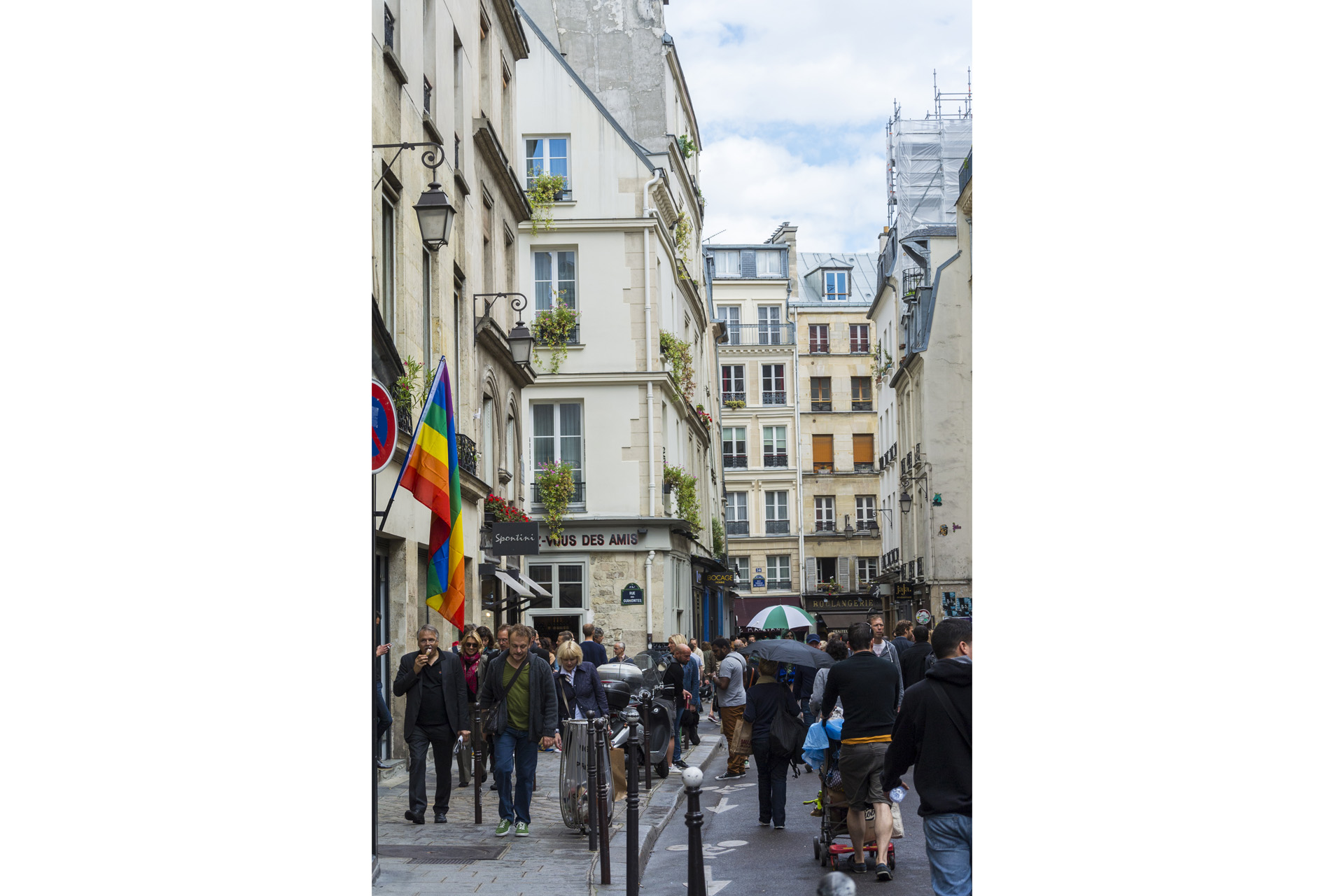
Marais, Paris (c) Getty.
The Break Down: Paris’ Arrondissements
1st arrondissement
Name: Louvre or le premier (the first), one of four arrondissements in the ‘Paris centre’.
The Lowdown: On the right bank of the River Seine, the 1st arrondissement is the the least populated, the smallest and the oldest of all of Paris’ arrondissements.
Best For: Touristing to your hearts content: find here the Louvre, Palais Royal and Jardin des Tuileries.
Don’t Miss: The chic designer boutiques along the Rue Saint Honoré and Place Vendôme, and Les Halls with its vast underground mall.
Image (c) Silvia Trigo via Pexels.
2nd arrondissement
Name: Bourse, the second of four arrondissements in the ‘Paris centre’.
The Lowdown: Primarily a business district with the nearby 8th and 9th districts, the 2nd arrondissement sits on the right bank and is named for the Bourse, the Paris stock market.
Best For: More shopping, but this time down Paris’ historic covered passages, of which there are plenty here, including the Passage des Panoramas (the city’s oldest), the Galerie Vivienne, and the Passage Choiseul.
Don’t Miss: Delicious ramen in the city’s main Japanese quarter along the Rue Sainte-Anne.
Image: Passage des Panoramas (c) CaptainHaddock via Wikimedia Commons.
3rd arrondissement
Name: Temple or haute Marais (north Marais), the third of four arrondissements in the ‘Paris centre’.
The Lowdown: On the right bank and home to a plethora of cool art museums, the 3rd is named for the Square du Temple and hosts the northern part of the famous Marais quarter.
Best For: Arty vibes and cool cafes.
Don’t Miss: The Marché des Enfants Rouges, Paris’ oldest covered market.
Image: Square du Temple (c) David McKelvey via Flickr.
4th arrondissement
Name: Hôtel-de-Ville, the final of four arrondissements in the ‘Paris centre’.
The Lowdown: The final arrondissement in the centre of the city, the 4th hosts the Paris City Hall, the Place des Vosges and the Pompidou Centre, as well as the northern part of Marais, the eastern part of the the Île de la Cité (including Notre-Dame), and all of all of the Île Saint-Louis.
Best For: Classic touristing with quieter moments on the leafy isles and in the Place des Vosges.
Don’t Miss: Notre-Dame. Perhaps that goes without saying.
5th arrondissement
Name: Panthéon
The Lowdown: Over to the Rive Gauche (the left bank) and named for the Panthéon monument, the 5th is home to the Latin Quarter with its long academic history as well as the National Museum of Natural History and Jardin des plantes.
Best For: Creative student vibes and bustling cafes.
Don’t Miss: The famed Shakespeare and Company bookshop sits in the 5th – perfect for some life romanticisation.
Image: Panthéon (c) Julia Volk via Pexels.
6th arrondissement
Name: Luxembourg
The Lowdown: Taking its nickname from the giant garden and senate housed in the left-bank arrondissement, the 6th is known for its cafe culture and connections to revolutionary thinkers throughout history. Here, retrace the footsteps of Jean-Paul Sartre, Simone de Beauvoir, Paul Éluard, and Françoise Sagan.
Best For: The idyllic Jardin du Luxembourg, alongside posh boutiques and eateries.
Don’t Miss: Booksellers on the banks of the Seine – très shabby chic.
Image: Fountain Medici in the Jardin du Luxembourg (c) Getty.
7th arrondissement
Name: Palais-Bourbon
The Lowdown: Named for the seat of the National Assembly, the 7th is most famously home to Paris’ most iconic landmark, as well as Napoleon’s resting place and a plethora of museums. The 7th is so posh that its old name, le Faubourg, is now used to refer to French nobility more generally.
Best For: The Eiffel Tower. It has to be done.
Don’t Miss: A picnic in the expansive Champs de Mars park below the Eiffel Tower.
Image: Eiffel Tower (c) 42 North via Pexels.
8th arrondissement
Name: Élysée
The Lowdown: Named for one of the world’s most famous streets, the 8th is brimming with fashionistas, shopaholics and, currently, President Emmanuel Macron in the Élysée Palace.
Best For: Upmarket shops along the Champs Élysées.
Don’t Miss: Whatever art exhibition is currently on at the Grand Palais.
Image: Champs Élysées (c) Getty.
9th arrondissement
Name: Opéra
The Lowdown: Making up the bulk of the central business district, the 9th is named for the large Palais Garnier (or Opéra Garnier) as well as the large department stores Galeries Lafayette and Printemps.
Best For: Catching a show in one of the lovely theatres.
Don’t Miss: SoPi (or South Pigalle), where the fun begins.
Image: Paris Opera (c) Getty.
10th arrondissement
Name: Entrepôt
The Lowdown: Paris’ most multicultural district, UK visitors are likely to pull into the 10th arrondissement on the Eurostar, greeted by bustling streets, and hip bars and restaurants.
Best For: Street food – head to Marché Saint-Martin to make the most of it.
Don’t Miss: An idyllic stroll (or cycle!) down Canal Saint-Martin – it feels very Amsterdam.
Image: Canal Saint-Martin (c) Getty.
11th arrondissement
Name: Popincourt
The Lowdown: Increasingly known for its chic shops, local culture, and hip bars and restaurants, the 11th is Paris’ most densely populated arrondissement, named for Rue Popincourt.
Best For: Combined shopping and dining on Rue de Charonne.
Don’t Miss: Le Perchoir, a restaurant on the seventh floor of the Hausmannian building with some of the best views over Paris.
Image (c) Getty.
12th arrondissement
Name: Reuilly
The Lowdown: What used to be an industrial centre is now a residential oasis filled with families. The 12th is Paris’ easternmost and largest arrondissement.
Best For: Green space in Bois de Vincennes (the city’s largest park) and Bercy, an old warehouse district, now a peaceful city oasis with a park and concert arena.
Don’t Miss: Coulée verte René-Dumont, a former railway line that is now an elevated garden.
Image: Bois de Vincennes (c) Getty.
13th arrondissement
Name: Gobelins
The Lowdown: Once of Paris’ most multicultural districts, the 13th is situated on the left bank and is quite residential. That said, Paris Rive Gauche is a newly-built, business-oriented neighbourhood in the district.
Best For: The 12th is home to Paris’ largest Chinatown, meaning it’s the place to be for a mixture of up-market and street food style Chinese eateries.
Don’t Miss: Book lovers will want to see the Bibliothèque Nationale François Mitterrand, France’s main library, set within book-shaped towers.
Image: Bibliothèque Nationale François Mitterrand (c) AndroidHel via Wikimedia Commons.
14th arrondissement
Name: Observatoire
The Lowdown: Situated on the edge of the city on the left bank, this residential district is sleepier than most of Paris’ other arrondissements, though perhaps most famous for its skyscraper, Tour Montparnasse.
Best For: Experiencing local eateries, creperies, cafes and historic bistros.
Don’t Miss: Sartre’s grave in Montparnasse Cemetery, and the eerie Catacombes de Paris.
Image: Tour Montparnasse (c) Salvatore De Lellis via Pexels.
15th arrondissement
Name: Vaugirard
The Lowdown: Home to the Front de Seine high rise district, the 15th is predominantly residential and named for the Rue de Vaugirard, the longest street in Paris stretching from the 6th through to the 15th.
Best For: Exploring sculptures by Antoine Bourdelle in the Musée Bourdelle.
Don’t Miss: The tethered hot air balloon in Parc André Citroën for a view of Paris from a unique vantage point.
Image: Parc André Citroën (c) Guilhem Vellut via Wikimedia Commons.
16th arrondissement
Name: Passy
The Lowdown: Bordering the 7th, the 16th arrondissement is swanky, housing foreign embassies alongside sleek museums like the Fondation Louis Vuitton and the Palais de Tokyo.
Best For: Magnificent street views of the Eiffel Tower, from trendy cafes and bars.
Don’t Miss: Place de Trocadéro, the best photo op in Paris.
Image: Place de Trocadéro (c) Getty.
17th arrondissement
Name: Batignolles-Monceau
The Lowdown: Paris’ trendiest arrondissement, the 17th is home to a broad range of neighbourhoods, as well as the start of the Champs-Élysées.
Best For: Narrow, winding streets packed with bars, restaurants and nightlife bustle.
Don’t Miss: Place de Clichy, best for nightlife.
Image: Place de Clichy (c) Yannick Fgl via Flickr (cropped).
18th arrondissement
Name: Butte-Montmartre
The Lowdown: Centred around Montmartre (la Butte), the 18th is home to most of the cool Pigalle neighbourhood.
Best For: Arty vibes (Picasso once lived here) and the world-famous Moulin Rouge.
Don’t Miss: The majestic Sacré-Cœur basilica – the views are worth the uphill climb.
Image: Sacre-Coeur Basilica (c) Getty.
19th arrondissement
Name: Buttes-Chaumont
The Lowdown: Predominantly residential, the 19th has plenty of green space, and is a frontrunner in urban regeneration.
Best For: Family fun: Parc de la Villette is home to fun museums, lots of space, and a bike lane alongside Canal de l’Ourcq.
Don’t Miss: Philharmonie de Paris, the breathtaking new performance venue.
Image: Philharmonie de Paris (c) Jean-Pierre Dalbéra via Flickr.
20th arrondissement
Name: Ménilmontant
The Lowdown: Last but certainly not least, the 20th was once Paris’ industrial centre, but is now a laidback hangout, home to the trendy Belleville neighbourhood and plenty of trendy and arty youngsters.
Best For: The hilly Menilmontant is a haven for nightlife lovers.
Don’t Miss: Père Lachaise Cemetery for Oscar Wilde’s gravestone.
Image: Rue de Ménilmontant (c) Jeanne Menjoulet via Wikimedia Commons.
